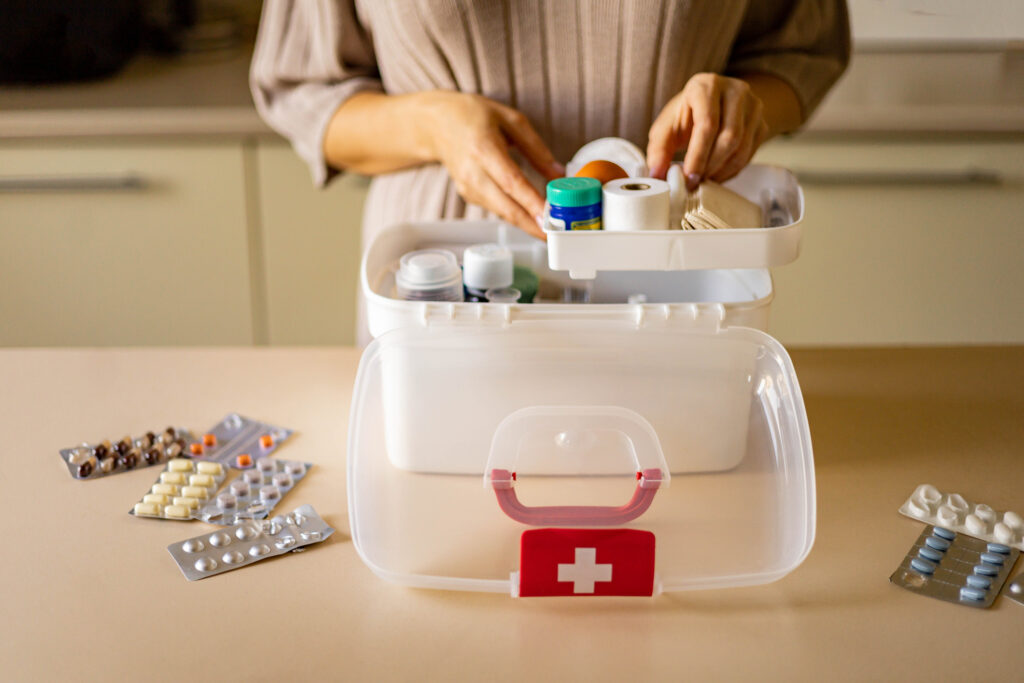A general first aid kit is good for minor cuts and superficial wounds. Bandages, gauze, dressings and tape are great to have handy to patch those nicks and scratches. Dressings keep away dirt and help hold a cut together for speedier healing. However, you can customize your kit.
Tailor your first aid kit to the location, activity, season and anticipate your needs. For instance, at the lake, it’s a good idea to add an oral antihistamine and perhaps topical steroid for allergic reactions to bites. What about a tick removal kit to quickly and safely remove any ticks. Topical and oral medications for sunburn, fever? Glucose tablets for a family member who uses insulin? It can be a good idea to include a list of current medications and allergies for all family members. Your pharmacist can provide up to date medication and allergy lists and help prepare a kit that makes sense for your family.
Does your kit need to be portable? Easy to grab and take away? Even the container should be considered. Does it need to be waterproof and highly visible? What about where to put it, protected from heat, but easy to spot? Don’t forget to make sure everyone knows where it is. Get in the habit of showing your guests where the washroom is (of course), and where the first aid kit is!
When do you think you may need it? Perhaps a flashlight should also be close by? Don’t forget to store batteries in their original package or a separate Ziploc bag next to your flashlight.
What about first aid kits for sports? Definitely an instant cold pack and tensor bandages for sprains, a splint, cloth/ties/triangular bandages to stabilize breaks.
Where should you have a first aid kit? Basic locations would be your car and home. You may also have a specific kit for hiking, camping, sports or other outdoor activities. What you need in your kit can also vary by season. If you’re stranded in winter – do you have a candle, matches and a blanket in the car?
Don’t overpack kits that need to be carried around – you don’t want a kit that is too bulky or heavy to carry. Try to anticipate and carry what is truly needed. So instead of a bottle of liquid, perhaps pills instead? For a wound wash, an empty bottle to get clean water? A plastic sealable bag is great to have to hold or protect things.
Try to anticipate injuries and emergencies for yourself and family. It’s best to add extra items to a first aid kit to customize it to your family’s needs. Get your family, even the kids to help plan your kits – it is a smart way to get everyone knowing what to do in the event of an injury.
Final tip, don’t forget to check your first aid kit at least annually, to refresh and remove any expired items (even batteries). It’s a good idea to label the front of your first aid kit with an expiration/check date.




